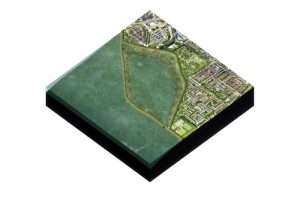How to Use
Inland shores (in Dutch “achteroevers”) are possible along large water bodies where the water level is higher than the hinterland. Then water can flow into the inland shore by gravity. An extra dike is needed to keep the water within the borders of the inland shore. This needs to be a reliable construction. A sustainable energy source (e.g. solar, wind, water) is used to pump water back into the large water body and to control the water level fluctuation in the inland shore. The pump facility should be equipped with a fish-friendly migration facility (see www.fishflowinnovations.nl).
Pumping is also important in relation to water quality. Stagnant water is a risk, especially in relation to algae bloom. So, some movement is needed. Water moment is also needed to enhance the filtering capacity of the inland shore, e.g. as helophyte filters or constructed wetlands. can be designed to remove N, P, BOD, COD, suspended solids and bacteriological pollution from the through-flowing water. The excess of riparian vegetation can be used in bio-mass energy plants as a sustainable energy source. Some kind of management of the vegetation will be needed.
Water levels fluctuations are allowed in an inland shore, but there should always remain permanent water to prevent loss of fish stock, other negative impacts on biodiversity and living conditions. The water level is managed in such a manner that the area can function as a climate buffer, taking in water when there is excess of water and release water when water supply is limited. The water level regime should simulate a more dynamic water system, but the regime should not be too extreme to the extent that it surpasses what is known as “natural”.
The surface water needs to be clean and in good ecological condition to provide suitable habitat for predators that feed on mosquito larvae. That way potential discomfort of midges can be limited. Good water quality is also important to allow recreational use of the water and to create an optimal living environment. If there are activities within an inland shore that can pollute the water (e.g. with nutrients: aquaculture, agriculture) then this part of the water needs to be treated separately.
Floating structures can block the sunlight underneath in the water. This can seriously limit plant growth. Plant growth is important for habitats and water quality. This has to be taken into account in the design (e.g. enough separation between floating infrastructure).

